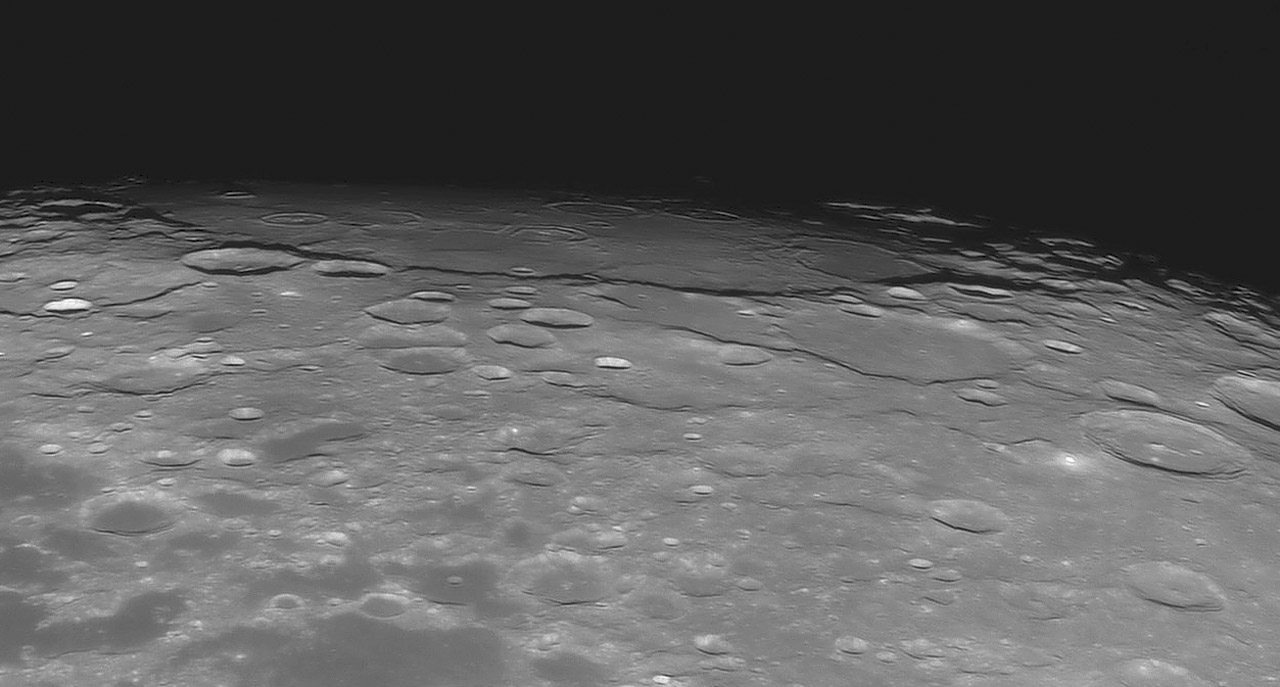October 11, 2014
Something Borrowed, Something New

image by Alfredo Vidal, L'Hospitalet del Llobregat / Barcelona (Catalonia/Spain)
I didn't enter my observation in an observing book many years ago when I saw the curved shadow of the rim of the Smythii Basin. Alfedro has now captured it so I don't have to try to remember the details of my observation - you can see it yourself. And I don't even have to write a description of what is visible because an LPOD from 2007 is still very relevant. Here it is: The illumination is low enough for the shadow of a basin rim to be visible on the western edge of the mare floor, proving that Mare Smythii is a depression contained within an impact basin. Both Apollo 16 and 17 imaged this area, yielding high precision topographic maps. From these, the 370 km rim that’s casting the shadow rises up to 3.4 km above the basin floor. The floor includes basalts that may be as young a 1 billion years old, perhaps the youngest on the Moon. Using Clementine data to identify craters that excavated below the basalt suggests that the maria lavas are thin, only about 325 m thick. The image also shows floor-fractured craters just on the terminator - Runge and Warner - and Kiess and Haldane a little nearer. All of these have erupted pyroclastic materials which show on high Sun views. Basalt on the northern portion of the basin floor is bright and has been dusted with anorthosite. This crustal rock was probably spread onto the mare as ejecta from Neper, Hubble and Joliot, all off the image to the left, but all with anorthosite in their central peaks. What a region!
Chuck Wood
Technical Details
08/10/2014, Time: (UT): 21:40:26. Celestron C-11 Edge HD, f: 10, camera QHY5-LII mono, IR Pass filter, Firecapture 2.3, AS!2 and Registax 6.0, (image resized)
Related Links
21st Century Atlas// charts 2 & L2.
Yesterday's LPOD: Feeble Light
Tomorrow's LPOD: Details, Details
COMMENTS?
Register, Log in, and join in the comments.



